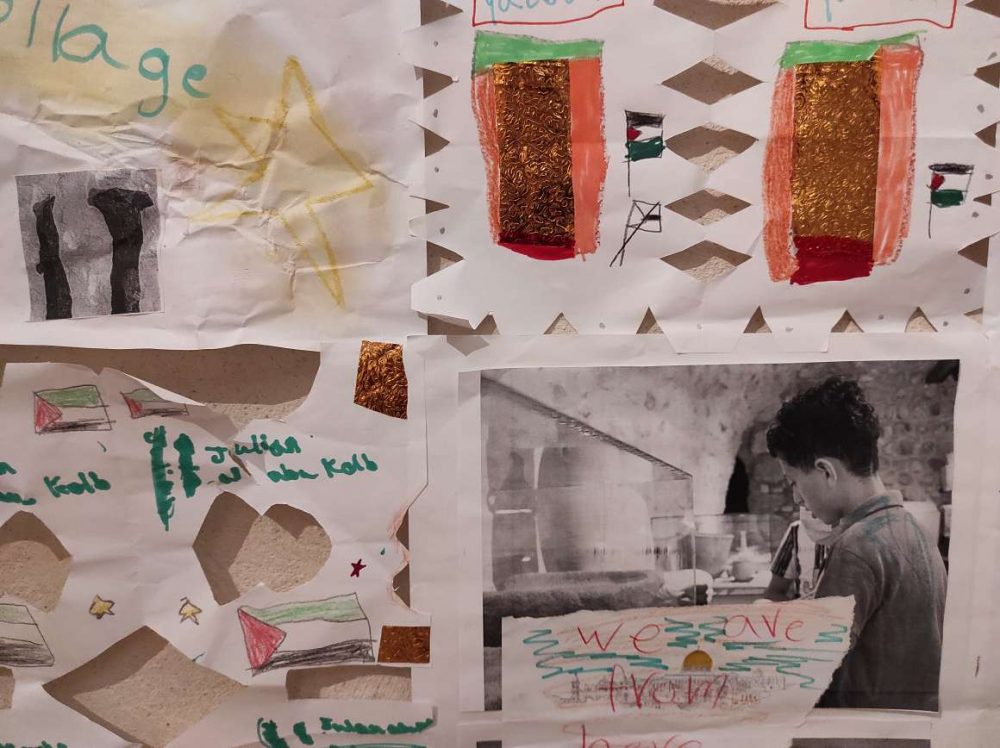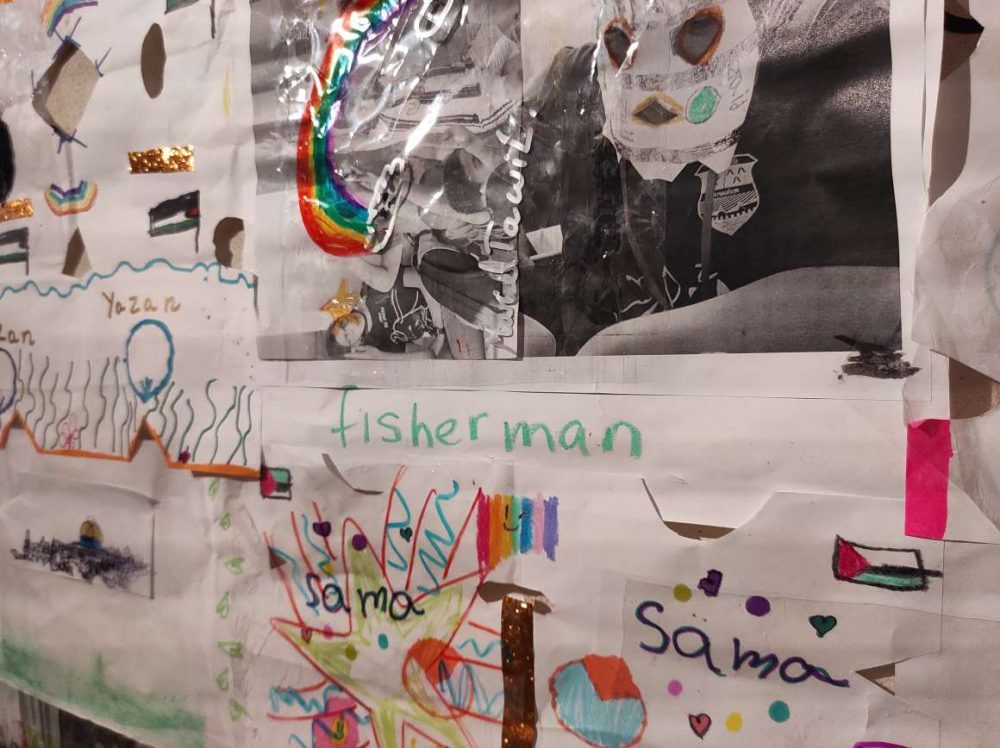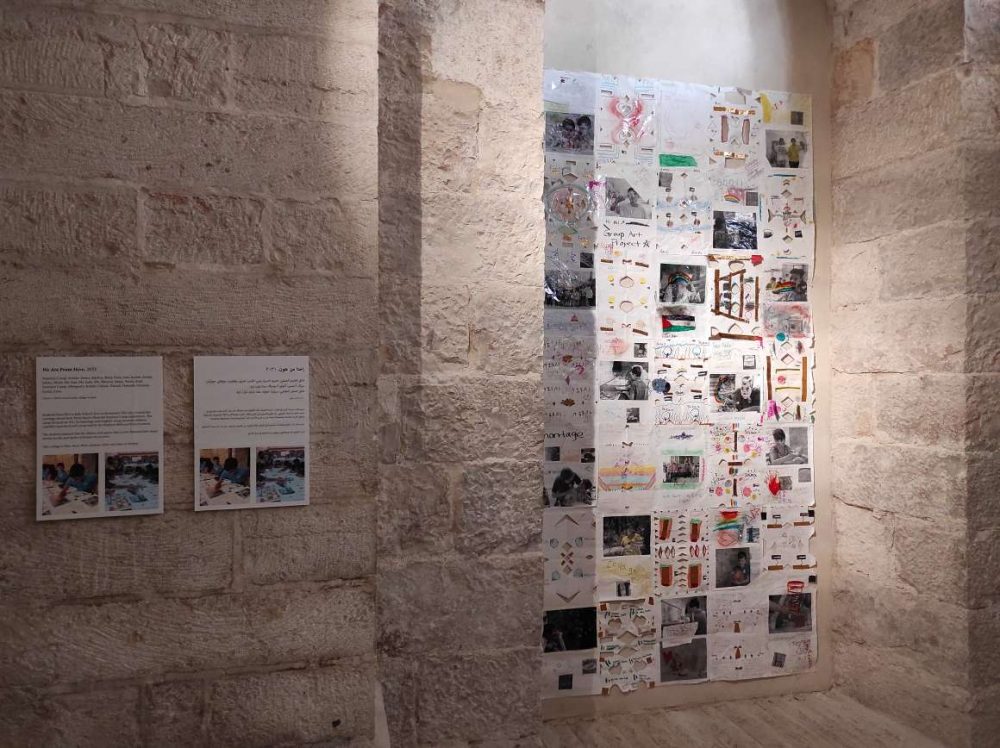For two entire weeks the halls of the Terra Sancta Museum were invaded by La Salle School kids’ joyous giggles and laughters. The group of 4th and 5th grades, aged 8 to 10, was involved in the first ever museum’s Summer Camp.
The initiative is part of Pro Terra Sancta managed and EU financed project aiming to reach the local community and get them to know the museum’s activities through a Gerosolomite identity focused path.
The Summer Camp was organized by Monica Valley, Head of Education and enthusiastic contemporary art PhD.
It is indeed by contemporary art that Monica and the Education Assistant were inspired when thinking about a site specific installation. Said art installation is now hanged at the entrance of the Terra Sancta Museum, located in the spaces previously assigned to the frary of the Flagellation. The site corresponds to one of the most important stations of the Way of the Cross.
Contemporary Art meets Archaeology
The ancient frary's walls and the Museum’s halls are now embellished by another astonishing art piece titled “We are from here!”. The collective artwork is inspired by the work of Mark Bradford. The L.A. based artist focuses mostly in the southern suburban area of the city, where the majority of the neighbourhood is black.
His huge collages are coming directly from billboards: every layer of advertisements revealed by the artists with targeted tears, tells the story of the neighbourhood.
Bradford’s creative process leads to marvellous collages, exhibited at Venice's Biennale in 2016 as well. The main idea behind said process is the same shared by Archaeology. The scientific approach of archeology, removing layer after layer in order to record and study what was found, aims to tell us about the material history of the people that lived in that site in the past.
Archaeologists to be and natural born Artists
The Summer Camp revolved around Archaeology, Art and English. The artistic introduction to the archaeological finds preserved in the Museum further enriched the experience of the kids.
Besides the traditional visits to the collections, the students attended creative workshops inspired by the most significant artworks of the Museum, thrilling scavenger hunts and had the chance to impersonate an archeologists’ team for one day straight.
Thanks to the noble sacrifice of two very new vases, whose shape recalled the ancient crates’ one, ceremoniously thrown on the floor of the courtyard in order to be broken with the great delight of the appointed ad honorem Indiana Jones, the kids could give a try at academic life: they recovered the pieces of the artefact and tried to put it back together.
The skills of the archaeologists in training , who succeeded in putting the vases back together in less than half an hour, greatly surprised the Director of the Museum. Ft Francesco Alliata, archaeologist of the Studium Biblicum Franciscanum, arrived just in time to see the last piece being fitted in: “Wait a minute! That’s MY job!”, he uttered. Nothing could be more flattering to the childrens.
The activities proposed to the students helped them to know, own and share the historical and cultural heritage of Jerusalem, an heirloom that belongs to them as much as it belongs to the world. The artistic site specific installation was the cherry on the top.
We are from here! Jerusalem’s kids collective collage
Made by loads of paper sheet folded on themselves and cutted at the corners in order to reveal, once opened, a geometrical pattern recalling the traditional palestinian embroidery, “We are from here!” is promoting the local identity through archaeology.
During the Summer Camp conclusive big party, La Salle School students and their families had the chance to further enrich the collage. They drew with sharpies on transparent plastic sheets, filled in shapes with colours and added key-words and other decorations.
What strikes the most is the uso of golden paper, of glitters and rainbows, the many palestinian flags and the presence of iconic landmarks of Jerusalem. La Salle School has both Muslim and Christian students. They chose to mark their presence in history in a bold, almost loud way.
It is no surprise considering all the clashes that took place a few months ago: even the young ones have to shout out to the world that they exist and that they are here to stay. They do belong to Jerusalem as much as Jerusalem belongs to them.
The art installation, in exhibition till December and then permanently exposed in the school’s new small art collection, is still a work in progress. The visitors of the Terra Sancta Museum are indeed invited to add up their personal touch to the collage and, by doing so, to create an open dialogue about the many identities of Jerusalem and its inhabitants.
Like our young archeologists and artists, even Pro Terra Sancta can now proudly say that “I am from here!”. We cannot wait for our donors, visitors, tourists and pilgrims of the Holy Land to say that as well!





















